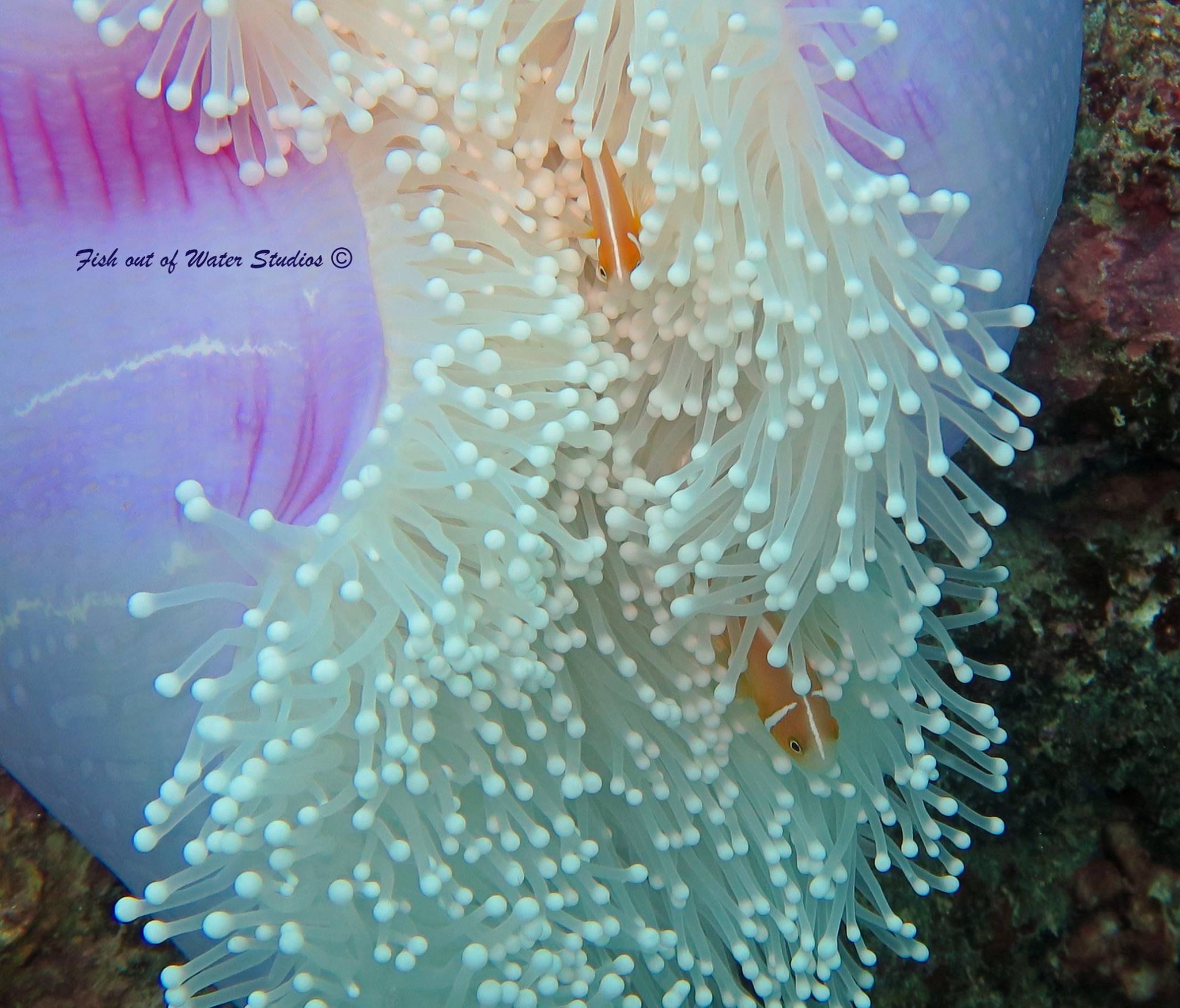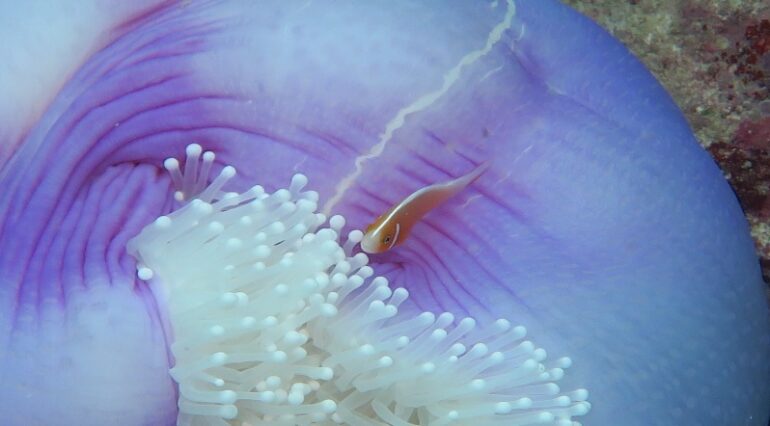Amphiprion perideraion
By: Greg Collinske
The Pink Skunk Clownfish (Amphprion perideraion) is a slightly delicate and often underrepresented species in our hobby when it comes to anemonefish. The Pink Skunk Clownfish has a striking color pattern which is quite different from its more common three striped ocellaris cousin.
This species was first described in 1855 by Bleeker. It also has a broad range from Ryukus Islands in the north to the Great Barrier Reef in the south. The southeastern edge of Thailand to Somoa in the east. We were lucky to photograph these on a dive last April on Flynn Reef in Australia with their host anemone.

Skunk Species
As the name suggests this clownfish belongs to a group known as the “Skunk Complex”. The common distinguishing white line running the length of the dorsal fin is present in three of the six described species. The three exhibiting the skunk stripe are the Pink Skunk Clownfish (Amphiprion perideraion), the Orange Skunk Clownfish (Amphiprion sandaracinos), and the Skunk Clownfish (Amphiprion akallopisos).
The other three species are similar in shape and appearance minus the dorsal stripe. The Pink Skunk Clownfish also has a postorbital stripe, which is absent on the Orange Skunk Clownfish.
The species is considered hardy with certain exceptions, they have a record of poor shipping and have sensitivities to swift water perimeter changes. In a well-maintained aquarium with stable water conditions, the Pink Skunk Clownfish has the ability to thrive and even reproduce.
Social Skunks
A social species, they can be kept in pairs or even small groups. These groups consist of a breeding pair and sub adults sharing one host anemone. The sub adults usually inhabiting the edges of the anemone. They are dependent on the anemone for defense and shelter due to their size and shy nature.
They rarely venture far from the anemone, even for food. The preferred host anemone appears to be the Magnificent Anemone (Heteractis magnifica), but they will also host in Sebae Anemone (Heteractis crispa), and Carpet Anemone (Stichodactyla gigantea).

The species is smaller in body size than most other clownfish species reaching a maximum of four inches (20 cm) in length. What they lack in size they do make up for in sound. The Pink Skunk Clownfish “sing” using their teeth, and jaw pops to amplify sound for attack and defense. This ranks them in the top three loudest out of all twenty-nine species of clownfish. The males tend to have pink or orange on both tail and dorsal fin and females show up with more white fins.
Skunk Care
The Pink Skunk Clownfish would do very well in an established peaceful reef with good water quality and especially with a host anemone available. They are a tropical species with temperature range of 74 to 82 degrees Fahrenheit and can tolerate a pH range between 7.8 to 8.4.
An omnivore they will feed on algae, amphipods, larvae, and even small crustaceans. They will accept flake and any small meaty foods, usually a variety of Mysis and brine shrimp in the home aquarium.
The Pink Skunk Clownfish deserves consideration for display in an established aquarium. These little-forgotten misfits can make as much of an impact in a home aquarium as any designer clownfish out there.



